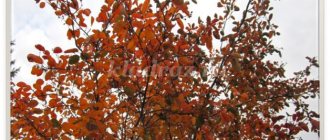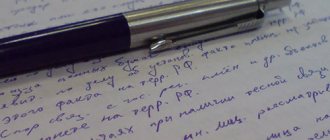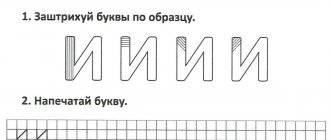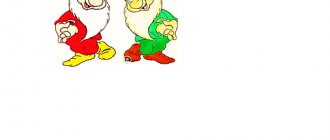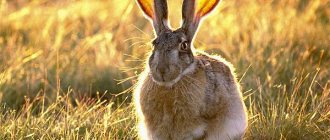Purpose of the lesson: we study the letter F, the formation of reading skills, the development of speech skills, the improvement of phonemic awareness, the basics of elementary graphic skills.
Tasks:
- introduce the preschooler to the letter F and the correct pronunciation of the sound;
- teach how to write the letter F in squares;
- to generate interest in learning poems and riddles.
Name what is shown in the pictures below:
Violet
Flamingo
Flag
Owl
When we pronounce the sound [f], the lower lip is pulled towards the upper teeth, there is only a narrow gap between the lower lip and the teeth. Say: FFF. The teeth and lower lip prevent air from leaving the mouth freely when we pronounce the sound [f].
- What sound is in the word FLAG, and in the word CLOSET, and in the word SHOES?
- At the beginning, at the end or in the middle of a word is the [f] sound in the word FLAG? - CLOSET? - SHOES? - APRON? — GRAPEFRUIT?
- Vowel or consonant sound [f]?
- Is this sound voiced or dull?
- Why?
- What other voiceless consonant sounds do you know?
- What voiced consonant sounds do you know?
Assignment: Printed letter F for preschoolers
Examine the letter F. Sew the letter F in the air and once in the notebook, carefully in the cells with a simple pencil or ballpoint pen.
In cases where the child is asked to write a whole line of a letter, syllable or word, the adult gives a writing sample at the beginning of the line. If a preschooler has difficulties, then an adult can draw two approximate lines, or put reference points that the child will connect with lines, or write the entire letters, and the child will simply circle them in a different color. Calligraphy should not be required at this stage of training.
Print
Summary of GCD in the senior group on the topic: “Sound F”
Abstract of GCD on the topic: “Sound F”
The lesson notes can be used by speech therapists when introducing children to the sound F in the senior compensatory group.
Purpose: 1. To introduce children to the sound F. To teach them to distinguish the sound among other sounds as part of a word. Learn to analyze the syllable FU, the sound series AFA. 2. Consolidate knowledge on the topic “Wild Animals”. Improve the ability to select adjectives for nouns. 3. Develop auditory perception. 4. Cultivate a desire to study. Material: sound cubes, sound F, object pictures for the sound F, animal toys, forfeits. Progress: 1. – Name the first sound in the word: JAR, SHELF, PEONY, BINOCULS, ECHO, HIVE, PANAMA, BOW, COCK, BANDAGE, CLOUD 2. Work on the sound F: – Today we will get acquainted with a new sound. What sound is repeated in the words: VEIL, FOUNTAIN, PHEASANT (Sound F). — Say the sound F. Is the F sound a vowel or a consonant? (The sound F is a consonant because it is not sung.) - What stops you from singing it? (Upper teeth and lower lip). — Let’s check the neck, is the F sound voiced or unvoiced? (The F sound is dull because the bell does not ring in the neck when we pronounce it.) - Today the F sound is in the blue shirt because it is hard. - Tell us everything about the sound F (The sound F is a consonant, deaf, hard). — A bear magician came to visit with the sound F. He will teach you how to do magic tricks. Pick up the blue flags. When you hear the sound F in the word, raise the flag up: WANDER, DESK, BEADS, JOITHER, FLANK, VASE, FLAGGER, PENICAL CASE, TICKET, FLEET. MAC - The magician has prepared another game for you. “Repeat the chain of syllables and get a forfeit”: FA-FO-FA FU-FY-FU FE-FA-AF OF-OF-UF FA-FU-FA FY-FO-FY - Who is depicted on your forfeits? (Wolf). - What animal is a wolf? (Wolf is a wild animal). - What kind of wolf? (The wolf is gray, big, predatory, hungry). -Where does the wolf sleep? (The wolf sleeps in the den). —What are the names of the cubs of a she-wolf and a wolf? (wolf cubs). - The wolf has prepared his task for you. You need to lay out the syllable FU from the cubes. - What is the first sound in the syllable FU? (In the syllable FU, the first sound is F. The sound F is a consonant, deaf, hard). - What is the second sound in the syllable FU? (In the syllable FU the second sound is U. The sound U is a vowel). - Connect the sounds and read the syllable. Where is the sound F in the syllable FU? (In the syllable FU, the F sound is at the beginning of the syllable.) — You correctly laid out the syllable FU and talked about the sounds. Get forfeits from the wolf. Who is depicted on the forfeits? (Fox). — Tell us about the fox (The fox is a wild animal. The fox sleeps in a hole. The fox has cubs). — Fox, which one? (The fox is red, big, fluffy, predatory, cunning). — Lisa has prepared her task for you: to lay out the sound series of AFA from the cubes. - Say a row (AFY). — What was the first sound you played on the track? (The first sound is A. The sound A is a vowel). - Name the second sound in the series AFY (Second sound F. The sound F is a consonant, deaf, hard). - What is the third sound in the series? (The third sound is Y. The sound Y is a vowel). - How many sounds are there in the AFA row? (There are three sounds in the AFA series). - Name the consonant sound in the series (Sound F). - Where is the sound F in the series AFY? (The F sound is in the middle of the row.) — Lisa wants to remind you how to read this sound series correctly. Place your right index finger on the cube with the sound A. Say the sound. Place your finger on the cube with the sound F and prepare your lips to pronounce the sound Y. Connect the syllable (FY). Read the entire series (A-A - FY - Y). - Where is the sound F in the series AFY? (In the AFA row, the sound F is in the middle of the row.) - Get forfeits from the fox. Who is depicted on these forfeits? (Hare). - What kind of hare? (Gray, small, fluffy, herbivore, cowardly, fast). -Where does the hare sleep? (In the forest, under a bush). —What are the baby hare's called? (Little bunnies). — The hare brought you cameras so that you could photograph his favorite pictures. Finger gymnastics “Photographers”. - Take cameras (children bring the collected fingers of their right and left hands to their eyes), take a photo of the first picture, the second, third, fourth - touch the tip of the thumb to the index finger (fountain, jacket, telephone, magician). - Let's develop the film (children clench their hands into fists, spread their fists to the sides), - Let's print the pictures (children clap their hands four times). - Let's see what kind of pictures we got (one child names the pictures in the correct sequence) FOUNTAIN, JACKET, PHONE, MAGICIAN SHOES, FLANK, FOOTBALL PLAYERS, BEANS T-SHIRT, LANTERN, BOTTLES, FRUIT - What are beans? (Beans are a vegetable). — What is a bottle? (A bottle is a glass jar for perfume). - For completing the task correctly, you will receive forfeits from the hare. — Who is depicted on the next forfeit? (Hedgehog). - Tell us what you know about the hedgehog (A hedgehog is a wild animal, the hedgehog sleeps in a hole. The baby hedgehogs are hedgehogs. The hedgehog is a predatory animal. The hedgehog feeds on mice, worms, and beetles). - What kind of hedgehog? (The hedgehog is gray, small, prickly, predatory). - The hedgehog wants to play with you. 3. Physical education minute. The bear showed us a trick - roll from one leg to the other. The hare brought a camera - jumping on the spot. The wolf bought aprons - hands on the belt, bending to the sides. The hedgehog brought a cart of fruit - sit down, hugging your knees 4. The bear - the magician loves to sail on a ship. He wants you to learn Marshak's poem with the sound F: The fleet is sailing to its native land, A flag on every ship 5. Color the Russian flag on the ship (Children color the flags in their workbooks). 6. Summary of the lesson. Tell us all about the sound F.
We recommend watching:
Synopsis of an individual speech therapy lesson in a senior group Synopsis of an individual educational activity with a 5-6 year old pupil for the correction of sound pronunciation Synopsis of an educational activity in a senior group with a compensatory focus Abstract of a developmental lesson for children 6-7 years old
Similar articles:
Summary of a comprehensive lesson on familiarization with the outside world and development of speech “Wintering Birds” in the senior group of a preschool educational institution
Lesson notes for the GPD. Cuttings of indoor plants
Tale about the letter F
Magician Fedya
A huge plywood poster appeared in the forest, on which it was written:
“Hurry to see! The pheasant magician uses a magic lantern to transform a ficus into a violet! A fountain from an empty bottle! Instant photography without a camera!
“Hey,” said Fedya the owl, “everyone can do it with a magic lantern.” But I’ll show you the same tricks without a flashlight. Who has a ficus? “I have it,” said the bear and brought a ficus in a pot. - Put it on the stump and give me your apron here!
Fedya covered the ficus with an apron and whispered loudly:
- Fabes, mabes, stick, ficus, become a violet! - then as soon as the apron is pulled off, the ficus crashes to the ground! The pot is in pieces, the ficus is in half. - Do you know what I’ll do to you for this trick? - the bear roared. - Learn first, and then show tricks, half-educated fakir!..
(G. Yudin)
Introducing the letter N
For classes you will need a picture with the image of N and a rhinoceros. Counting sticks, watercolor paint, plasticine, children's books with poems, riddles, and charades will be useful. Coloring books, colored pencils, and checkered paper will help reinforce the material.
Using the visual channel using vision
Memorization of new signs in children, regardless of age, occurs primarily through the organs of vision. The use of the visual channel is necessary to create a picture-sound association in the child. Exercises for memorizing the desired image will help you use this channel to its full potential.
First, the adult shows a picture from the alphabet depicting the symbol N and says: “This is a rhinoceros - N.” He asks you to repeat what was said, thereby strengthening the connection between the picture and the image. After some time, the teacher again shows the figure N. The child must remember the picture, then the name of the animal, and then the letter.
To memorize the image of N, it is recommended to learn a poem from a children's book with a color image of an animal. Children easily remember Lydia Grzhibovskaya’s quatrain from “The Cheerful Alphabet”: The Rhinoceros shouts to his friends: “I brought the letter N to you! You need to know the letter N to celebrate the New Year!”
After mastering the image with the picture, you should move on to memorizing one letter. To do this, the adult shows the figure N in the alphabet without pictures or, together with the student, lays it out from available means: counting sticks, pencils, candies. To consolidate knowledge and at the same time develop imagination, you should do a simple exercise on joint walks: lay out the symbol H from pebbles, twigs, and wires.
The next stage of learning through the visual channel is finding the desired figure in the middle of the word. On walks, the child is asked to find the image of H on signs made in large and clear fonts. Over time, the exercise becomes more complicated by asking in which part the desired symbol is located - at the beginning, middle or end. You can do the exercise at home using newspapers, magazines, and advertising brochures.
To secure the image, you should jointly draw a shape H on a sheet of paper and cut it out. Next, the adult cuts the letter in the middle, vertically or horizontally into 2 parts and invites the child to fold it again.
Picture from the alphabet for memorizing the letter N.
Using tactile exercises with sensations
Tactile sensations play an important role in a little person’s understanding of the world around him. Exercises using sensations develop the child’s creativity. To learn the alphabet, special games are used - exercises that strengthen the connection between sensation and the brain, helping to master new material.
Slowly draw the desired letter symbol on the child’s palm with your finger, ask him to close his eyes and pronounce the sound “n”.
Using the palms and the outstretched thumb, draw the figure N.
A fun activity would be drawing H on paper with your finger using gouache or watercolor paint.
Make a figure of N from plasticine or dough.
On the cereal scattered on a flat surface, draw an H with your finger.
Using the audio channel
Children learn to hear and distinguish hard and soft sounds in words, and then put them into syllables, using this channel of perception. Exercises using the sound method are performed both independently and simultaneously with visual or tactile ones.
The teacher slowly pronounces a series of syllables containing and not containing N: ne, for, nya, ma, well, so, nu, he, ni, ne. The child’s task: stamp his foot when he hears a hard sound [n], clap his hands when he hears a soft sound [n']. Gradually, the exercise with the same condition becomes more difficult. Instead of syllables, the adult says a series of words: Natasha, threads, Nikolai, drum, Nadezhda, clinic, sled, skates.
For these purposes, you can read poetic texts that are easy for children to understand and memorize. For example, “In the morning, a young rhinoceros washes his ears and cleans his horn.”
For older children, the task is given to remember as many words as possible that start with the sound [n] or [n'] while listening to Georgy Yudin’s story about Nikita. This is a classic children's text about how a boy began making Pinocchio's nose out of paper for the New Year. Nothing worked out for him. Nikita came up with the idea of making a horn on his head, like a rhinoceros. I failed again. I was offended by everyone and decided that it would be better to come after the New Year and say that I was in an invisibility suit. The story contains many N words and is therefore considered appropriate for the activity.
Funny poems about the letter F for children
... And the pheasants asked - Find us the letter F, Owl. But, sighing heavily. An eagle owl hides in a hollow. An eagle owl, even with a flashlight, sees nothing during the day. (G. Satir)
Owl in the bowl wow wow wow! The bunny's spirit froze. The poor little bunny didn't sleep, he trembled under the bush all night. (F. Bobylev)
Violets - Ew, whew! - the bird sings. And the violet blooms, And the earth looks at us with a million blue eyes. (G. Vieru)
The magician is dressed in a tailcoat, the torch will turn into a bouquet, the fairy will jump out of there. Is it a trick or a miracle? (V. Berestov)
The owl took the soccer ball, And at the new minks, a football match began between two teams of new ones. (A. Pudval)
The owl is gray, the owl is old, And the eyes burn like headlights. Owl - jump, eagle owl - hop, Filinenka gave a flag. Little Owl is glad, glad - Two lanterns are burning. (G. Satir)
Checkbox Look! Look! That's the flag Mitya has! Who gave the flag? Mitya made it himself. (O. Vysotskaya)
Photographer It's not easy to photograph animals. The hare asks: “Hurry up!” The mouse squeaks: “I’m a little afraid that the cat will see the picture.” “I’ll prick you,” the hedgehog threatens, “if you don’t send me a picture!” (V. Berestov)
Fairy tales and charades with the letter N
The Iris Review fairy tale is suitable for consolidating the material:
“Once upon a time there was a letter N. Persistent, persistent, assertive. Oh! How she loved to say the word “no” to her letter friends! She had an answer ready for everything. Draw daffodils? No! Dress up? No! Pick some nectarines? Not again! The letter N liked to say “no” and not do anything. What a quarrelsome letter! The letters stopped addressing her. Who wants to hear “no” as an answer all the time?
At first, the letter N felt amazing! Nobody asked her for anything, demanded anything, asked her for anything! But how quickly she got tired of it! She wanted to be needed! And the letter N began to try. She learned to listen to what other letters were saying. She uttered the word “no” only occasionally. And she became completely different! Necessary! Tender! Resourceful! So the letter N turned from a dissatisfied letter into one that everyone likes! And one small letter from the Alphabet said that the letter N is good, because it is the most New Year’s in the world!”
Charades:
Letter N Charade
With “N” - children dream of him at night, With “K” - in the heat he gives them something to drink. (sleep - juice) With "R" - rewards you with a rash, With "N" - wins at the races. (measles - horse) I will not go into the branchy forest, My horns will get stuck in the branches, But I will exchange L for S - And the leaves of the forest will all wither. (deer-autumn)
Riddles, proverbs and sayings
Riddles: “Threads”, “Nose” and the word “No” begin with this letter, and it is also found in “candy”, “Scissors” and “day”. (Letter N)
With this letter, people, mice, and cats walk along the path. And she, passing through the ear, sews us a new toy. (Letter N - legs, thread)
He comes on a winter evening to light candles on the Christmas tree. He starts a round dance - This is a holiday... (New Year)
Proverbs and sayings: Don’t leave a friend in misfortune. Every man to his own taste. There is an excuse for any ignorance. Everything is possible, you can’t just climb into the sky. Put your feet in your hands and go. Take care of your nose in the extreme cold. Well, where we do not. A week feeds a year.
